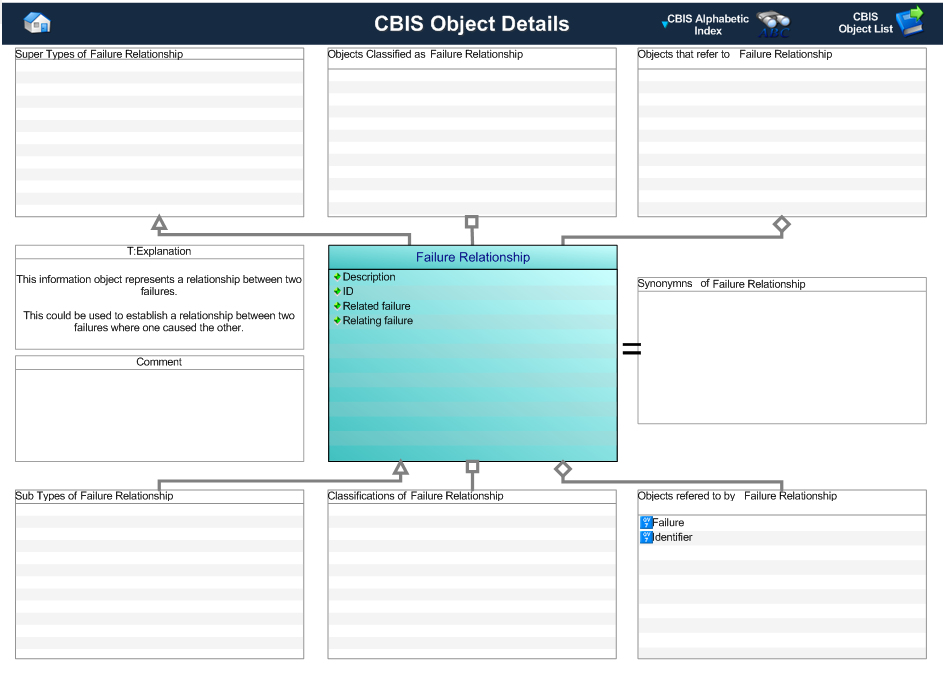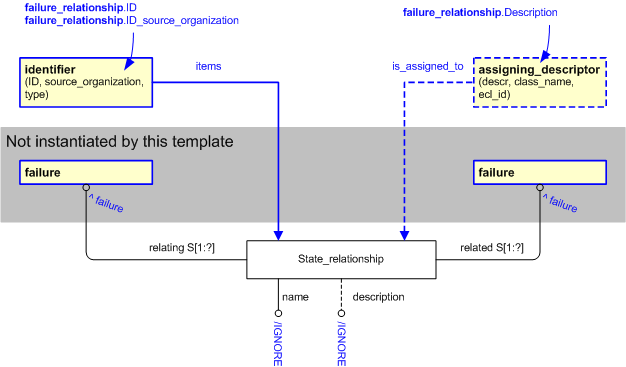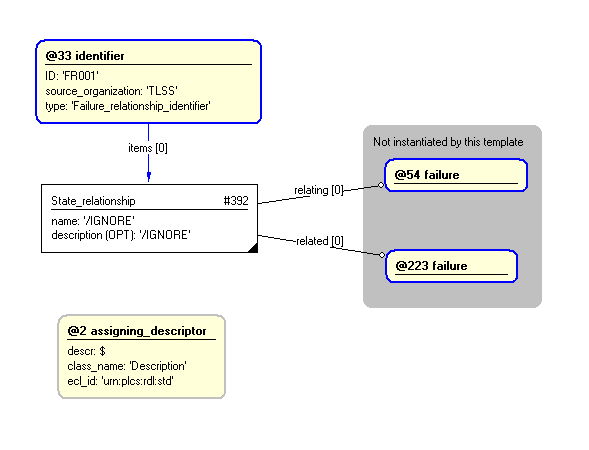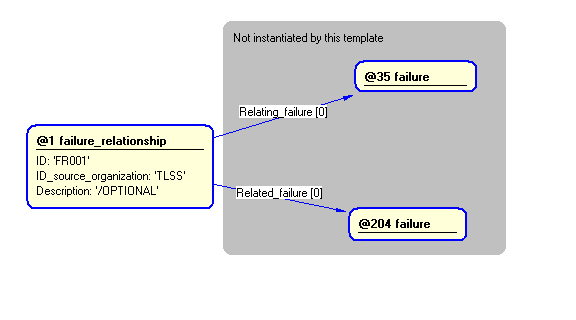Template:— failure_relationship (flr_rel)
Context:— UK_Defence |
Date: 2009/04/17 11:28:55
Revision: 1.2
|
This section specifies the template failure_relationship.
NOTE
The template has been defined in the context of
UK_Defence.
Refer to the business context for details of related templates.
NOTE
An explanation of a template and the associated instantiation path is
provided in the
Template overview
section.
This template describes how to represent a relationship between two failures.
This template describes how to represent the UK_Defence concept of a failure relationship in terms of PLCS
model elements (templates, entities, and reference data).
The definition of the failure_relationship object is: This object represents a relationship between two failures.
Figure 1 — Graphical Representation for Business Object failure_relationship
|
Attribute name
|
Attribute description
|
Attribute type
|
Optionality
|
| Description |
This is the qualifying description of the relationship between the two failures. |
Intrinsic |
Optional |
| ID |
This is the identifier of the failure relationship. |
Identifier |
Mandatory |
| Related failure |
This is the reference to the failure that is related to the relating failure. |
Failure |
Mandatory |
| Relating failure |
This is the reference to the failure that is related to by the related failure. |
Failure |
Mandatory |
Table 1 — Failure Relationship attribute details
The EXPRESS-G diagram in
Figure
2
shows the templates and EXPRESS entities that are required
to represent the template
"failure_relationship".
The text highlighted in blue shows the template parameters.
Figure 2 — An EXPRESS-G representation of the Information model for failure_relationship
The graphic for the template to be used in other EXPRESS-G diagrams
is shown in Figure
3
below.
Figure 3 — The graphical representation of the failure_relationship template
The following input parameters are defined for this template:
This is the identifier of the failure_relationship.
The organization that created the associated identifier. Additionally
a Person or Information System could be defined when either of these are the source; see Identifier template characterizations.
Description (Default=/OPTIONAL,Type='STRING', Optional)
The description of the failure_relationship.
This is the reference to the (child) failure that is related to the relating (parent) failure.
This is the reference to the (parent) failure that is related to by the related (child) failure.
The following reference parameters are defined for this template:
Allow the
State_relationship
entity instantiated in this path to be referenced when this template is used.
%^target = $failure_relationship.state_rel%
The instantiation path shown below specifies the entities that are to be
instantiated by the template.
A description of templates and the syntax for the instantiation path is
provided in the
Templates Help/Information section.
The following entities are instantiated with attributes as specified:
The instance diagram in Figure
4
shows an example of the EXPRESS entities and templates that are instantiated by the template:
/failure_relationship(ID='FR001', ID_source_organization='UK_Defence', Description='/OPTIONAL')/
(an illustration of the consolidated failure_relationship template is shown in
Figure
5 below.)
Figure 4 — Entities instantiated by failure_relationship template
The instance diagram in
Figure
5
shows the graphic symbol for the template that is to be
used in other instance diagrams. The example template is:
/failure_relationship(ID='FR001', ID_source_organization='UK_Defence', Description='/OPTIONAL')/
Figure 5 — Instantiation of failure_relationship template
Characterizations
No common characterizations of the template
failure_relationship
have been identified. However, the ISO 10303-239 EXPRESS model
may enable other assignments to the entities instantiated by the template.




